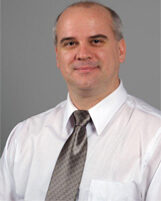Project description :
Summary (MAX of 2100 characters with spaces)
This project aims to establish new design methods for robust and efficient automotive navigation and optimal management of a fleet of vehicles in harsh environments. In addition, the project also aims to develop innovative metrics for real-time analysis of dangerous driving behaviour as well as real-time analysis of car accidents in order to significantly improve global safety of Canadian drivers. In general, this research proposes to combine measurements from a high sensitivity GPS receiver with data coming from a self-contained inertial navigation system and other complementary autonomous sensors such as odometers and magnetometers. Moreover, in order to provide an affordable solution, the targeted system will be based exclusively on the use of very low cost sensors. It is expected that this project will help reduce the environmental footprint of motor vehicles in addition to having a significant positive impact on overall vehicle safety. For example, improving vehicle localisation accuracy and robustness in harsh environments can significantly reduce the time to find a stolen or misplaced vehicle, which can have an important impact on Canadian companies’ finances. Furthermore, having a robust and precise solution for monitoring vehicle behaviour can lead to the implementation of a new taxation system based on car usage or on driving behaviour, which according to recent studies, can help reduce vehicle greenhouse gas emissions by up to 10%. In addition, accurate reconstruction of car accidents in real-time allow prediction of specific parameters of an accident scene thus improving reaction time and vehicle safety. The proof-of-concept demonstrator will be evaluated in-laboratory and on-road using simulation equipment and a car test platform under real operating conditions in order to characterize protocols and system performance. The project will contribute to international initiatives for the definition of new standards and contribute to Canadian efforts to reduce greenhouse gas emissions, and create new employment opportunities for the team of highly qualified personnel.
Responsibilities of the candidate:
According to the schedule, the post-doctoral fellow will be in charge of the following tasks:
1) 1-11 In-depth literature review on project topics
2) 1-12 Study of scientific objectives
3) 1-34 Initial system architecture selection
4) 1-42 Preliminary modeling of the calibration procedure
5) 1-44 Study of temperature effect on inertial measurements
6) 1-52 Preliminary modeling of the AHRS algorithm
7) 1-54 Study of soft and hard iron effects
8) 1-62 Mathematical modeling of the linearized navigation model
9) 1-65 Study of advanced non-linear models
10) 1-8 Final year report
11) 2-11 Review of the actual GNSS assistance methods
12) 2-21 Review of the actual analysis metrics
13) 2-22 Modeling of the preliminary analysis metrics
14) 2-41 Modeling of the temperature dependant model
15) 2-51 Modeling of the magnetic disturbance detection / compensation algorithm
16) 2-61 Study of automotive vehicle constraints
17) 2-62 Modeling and integration of vehicle constraints
18) 2-71 Study of advanced sensor error estimation models
19) 2-73 Mathematical modeling of online calibration algorithms
20) 2-91 Mathematical modeling of advanced non-linear filters
21) 2-11 Final year report
22) 3-22 Study of A-GNSS integration schemes
23) 3-31 Study of vehicle monitoring data integration schemes
24) 3-45 Modeling and testing of improved analysis metrics
25) 3-61 Mathematical modeling of the advanced adaptive navigation model
26) 3-71 Review of the actual analysis metrics
27) 3-72 Modeling of the preliminary analysis metrics
28) 3-85 Modeling and testing of improved analysis metrics
29) 3-10 Final year report
30) 4-15 Study of possible architectural improvements
31) 4-21 Modeling of improved analysis metrics
32) 4-6 Final year report
The objective of the post-doctoral fellow’s project is to ensure that theoretical developments made by the research team will lead to the ultimate goal of the project: the development of a robust embedded integrated navigation system for real-time vehicle fleet monitoring and real-time analysis and diagnosis of car accidents. He should work on the most important theoretical subjects of the project, from the initial integrated navigation algorithm design, its integration with the Orchid platform as well as the development of more advanced navigation algorithms and analysis metrics. One of the tasks of the post-doctoral fellow is to ensure, together with the professors conducting the research project, and the industrial groups, that the research subjects proposed during the three years advance at reasonable pace. He should also support the research team members during their research activities, guide and supervise their research work. He should always have a general view of the global project and mainly on the progress in related theory. He will know about the work of the trainee, Master’s, and Ph.D. students in theoretical areas.
The post-doctoral fellow will start his research work with a thorough overview of the individual project requirements and integration goals and with a detailed literature review and theoretical background about the integrated navigation algorithms and the accident analysis metrics. He will be actively involved in the detailed module design to the point of ensuring that reliability, interoperability, and robustness issues will be addressed. The post-doctoral fellow will be involved in the development of an improved navigation algorithm based on the use of non-linear models, as well as, in the development of innovative metrics for real-time analysis and diagnosis of car accidents. His work will mostly involve mathematical modeling these two modules. During this period, he will work very closely with the Ph.D. students on these research subjects. Finally, the post-doctoral fellow will review overall integration details as well as results from laboratory and on-road tests. A critical aspect of his work will be to ensure that lessons learned from on-road tests make their way back into the design process as it is taking place. The post-doctoral fellow will also focus on the interoperability and robustness aspects and on the improvement that could be done in order to obtain a simple and compact platform, using a simplified and non-intrusive architecture.
![]()
